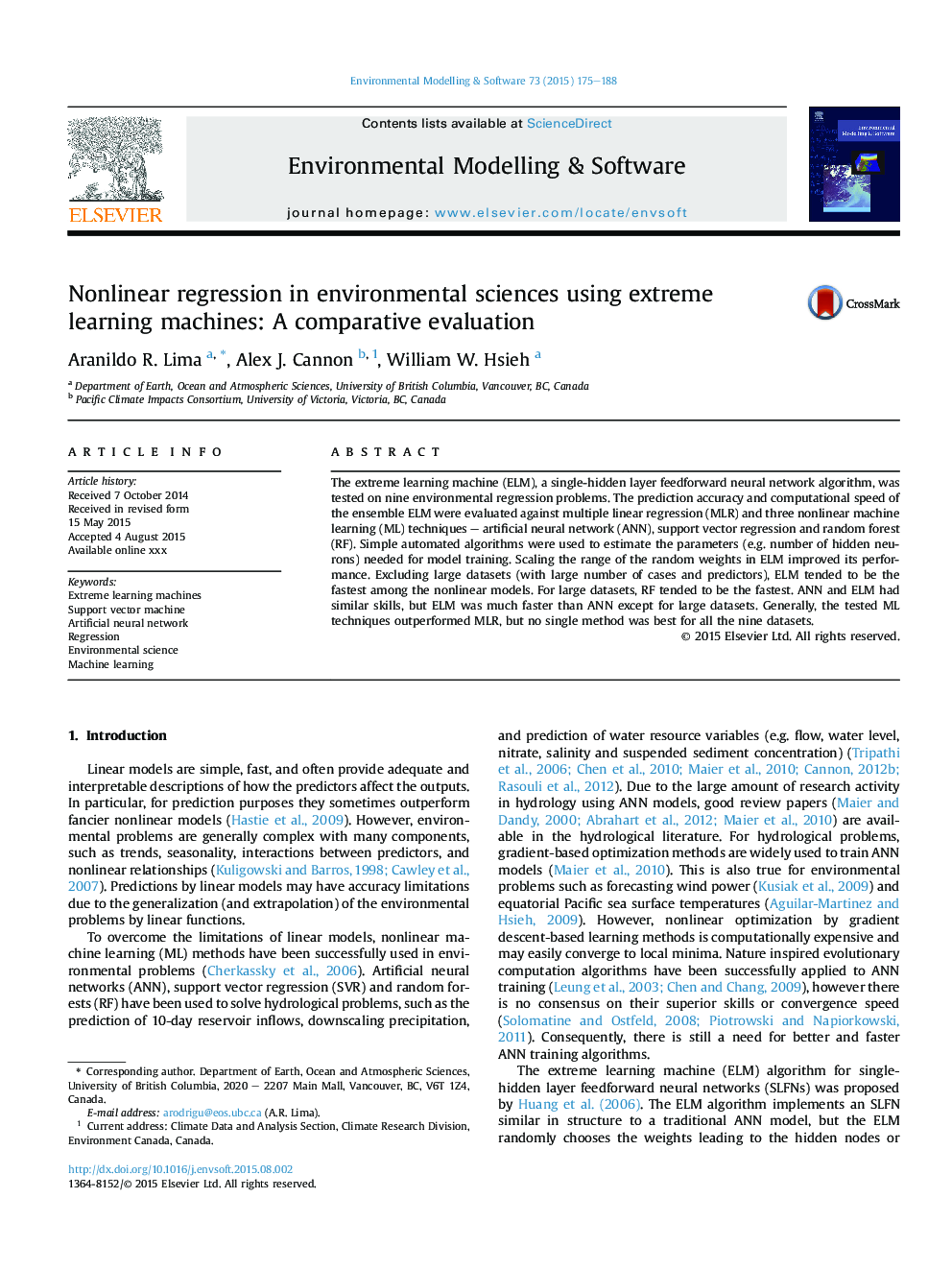| Article ID | Journal | Published Year | Pages | File Type |
|---|---|---|---|---|
| 6962918 | Environmental Modelling & Software | 2015 | 14 Pages |
Abstract
The extreme learning machine (ELM), a single-hidden layer feedforward neural network algorithm, was tested on nine environmental regression problems. The prediction accuracy and computational speed of the ensemble ELM were evaluated against multiple linear regression (MLR) and three nonlinear machine learning (ML) techniques - artificial neural network (ANN), support vector regression and random forest (RF). Simple automated algorithms were used to estimate the parameters (e.g. number of hidden neurons) needed for model training. Scaling the range of the random weights in ELM improved its performance. Excluding large datasets (with large number of cases and predictors), ELM tended to be the fastest among the nonlinear models. For large datasets, RF tended to be the fastest. ANN and ELM had similar skills, but ELM was much faster than ANN except for large datasets. Generally, the tested ML techniques outperformed MLR, but no single method was best for all the nine datasets.
Keywords
Related Topics
Physical Sciences and Engineering
Computer Science
Software
Authors
Aranildo R. Lima, Alex J. Cannon, William W. Hsieh,
